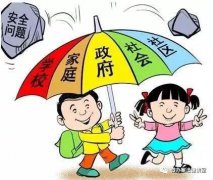1. Life
●Animals
The unit Animals helps students discover what makes animals
similar and what makes them different. Understanding the diversity
among animals helps students appreciate and enjoy the uniqueness of
all creatures. Topics include habitat, diet, body parts, movement,
special abilities, and more.
Students need to think about how they treat animals and how are
they fit into the animal kingdom.
●Living/Non-Living
This unit helps students explore the important differences between
the two. It also addresses topics such as: Non-living components of
living things, nurse logs, sea stars, babies and parents, and cells.
●Plants
This unit helps students explore what plants require for survival,
how plants grow, plant parts and their functions, how people and
other animals use plants, special types of plants, where different
kinds of plants can be found, and other plant-related topics.
Students may gain an appreciation for the amazing diversity of plant life on Earth and the extensive roles that plants play in their
lives.
●Senses
This unit helps students explore how and why humans use their five
senses. It addresses the body parts used for each sense, as well as
how these senses communicate with the brain to make meaning of
the incoming information. The unit also addresses how each sense
keeps us safe.
It is important for students to appreciate and protect their senses
so they can learn from the world around them and have a lifetime full
of rich experiences.
2. Earth & Space
●Earth, Moon, and Sun
This unit helps students understand that Earth rotates on its axis,
Earth revolves around the Sun, and the Moon revolves around
Earth. Humans have an ever-growing understanding of how the
Earth, Moon, and Sun move and interact. This understanding
helpsstudents make sense of what they see in the sky, both by day
and by night.
An understanding of our nearby space neighborhood can also
inspire future exploration deeper into space, which may someday
even include the discovery of life on distant planets.
●Weather
This unit helps students explore weather's many different aspects,
including temperature, wind, clouds, precipitation, and storms.
Certain unit materials address what causes the weather to occur. The
unit also draws connections between the seasons and their weather
patterns.
This unit provides opportunities for students to learn more about
natural weather phenomena they observe in their everyday lives.
Understanding the weather can also prepare us to take precautions
that will keep us safe in the event of severe weather.
●Earth’s surface
This unit helps students explore the land and water that make up
Earth's surface. Earth's surface is shaped into various landforms by
gravity, wind, water, and the movements of Earth's crust. Earth's
surface provides everything needed for life to thrive, including shelter,
food, and water.
Understanding Earth’s surface will help students appreciate the
uniqueness of our planet and may encourage them to take action to
protect it.
3. Physical
●Doing work
This unit helps students explore the concepts of work and force.
Students will learn that the amount of work required to perform a task
depends on the amount of force needed to move it, as well as the
distance an object will be moved.
●Energy
This unit helps students understand what energy is. Unit materials
focus primarily on five important types of energy: light, sound, motion,
heat, and electrical. Each energy type is defined and supported with
everyday examples.
It’s important to understand where energy comes from, how it
behaves, and why it is valuable to us. By becoming familiar with
different types of energy, students can better appreciate having the
energy sources they rely upon in daily lives.
●Light
This unit helps students explore the properties of light: where it
comes from, how it moves,and how it interacts with objects.
Understanding the physical properties of light helps us anticipate
how light will behave as we use it and interact with it. Light also adds
to the beauty and complexity of the world around us.
●Properties
This unit explains how shape, color, texture, weight, state of matter,
and other properties can be used to identify, describe, and compare
matter. The unit also explains that we choose to make things out of
materials that have the properties we need or want.
Identifying properties of objects helps us make decisions and
communicate with precision. Practicing careful observation will
prepare students to become successful scientists and citizens. It may
also allow them to appreciate the special qualities of the things
around them that they might normally take for granted.
●Magnets
In this unit, students will learn that magnets behave in predictable ways, making them reliable and valuable tools.
Things move
This unit explains these forces, and it describes the movement of objects, including how forces can move things, stop them, and change their speed and direction. Knowing how and why things move allows us to work, play, get around, and complete everyday tasks.
4. Process
Tools
1. Thermometers
Thermometers are tools used for measuring temperature.
By using the resources below, students will learn about this
important science tool and practice using it in meaningful
ways.
2. Balance Scales
Thermometers are tools used for measuring temperature. By
using the resources below, students will learn about this
important science tool and practice using it in meaningful
ways.
3. Length Measurement
Many scientific investigations and experiments require accurate length measurement. By using the resources below, students will learn about tools used for measuring length, including rulers, meter sticks/yardsticks, and measuring tapes.
Students will also practice using these important science tools. Resources provide instruction in both metric and U.S.
customary units.
4. Hand Lenses
Hand lenses are tools that assist in scientific observation. By using the resources below, students will learn about hand lenses and practice using this important science tool.
Skills
1. Hypotheses
Hypotheses are statements that predict an outcome and provide
a potential explanation for an experiment, based on prior
knowledge. By using the resources below, students will learn
about this important science skill and practice making good
hypotheses.
2. Data Sheets
Collecting data is a crucial part of of any scientific endeavor.
This mini-lesson will show students how to collect and organize
their data using a data sheet.
3. Using Diagrams
In science, using diagrams is an important way to present
information. By using the resources listed below, students will
learn about different types of diagrams. They will also have
opportunities to practice reading and creating diagrams.
4. Draw Conclusions
In science, an investigation is not complete without drawing a conclusion. By using the resources listed below, students will learn about several important parts of a good conclusion. They will also have opportunities to practice writing and judging conclusions for sample science experiments.
5. Observation vs. Inference
In scientific study, both observations and inferences are important. By using the resources listed below, students will learn about the difference between observations and inferences.
They will also have opportunities to apply what they have learned.
6. Identify and Control Variables
It is important to identify the variables in a scientific investigation and to be able to control those variables. Otherwise, it may be impossible to yield reliable results and to draw valid conclusions.
This unit will help students distinguish among independent, dependent, and controlled variables.
7. Using Graphs
Throughout scientific study, students will encounter data displayed in a variety of graphs. This unit provides students with background and practice in interpreting and making bar and picture graphs. Students will learn about the X-axis and Y-axis, how to label each axis, and how to draw conclusions by examining graphs.


